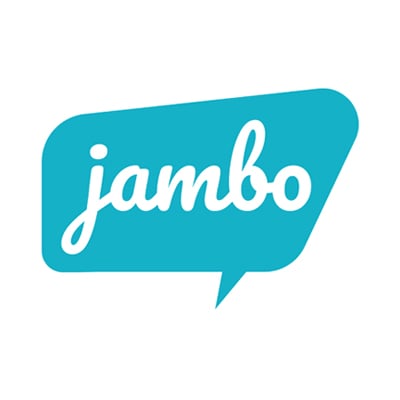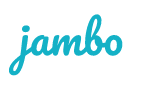
Stakeholder Relationship Management (SRM) software is designed to simplify and streamline the stakeholder management process by giving teams a centralized and organized space for all their engagement and consultation information.
While your organization may understand that an SRM is the ideal stakeholder management tool for enhancing your stakeholder management efforts, it's not always easy to determine when the right time is to start using an SRM.
In this blog, we'll identify ten common stakeholder management challenges that an SRM is designed to address. If any of these resonate with you or your team, it's time to seriously consider adopting an SRM.
10 common stakeholder management challenges
The following are ten common stakeholder management challenges that signify it's time to adopt an SRM software:
1. The volume of stakeholder information is becoming overwhelming
Stakeholder management challenge:
- Are you collecting significant amounts of stakeholder information?
- As you're engaging and consulting, are you noticing it's becoming challenging to organize and manage all your data in your current system or spreadsheets?
The reality is, when you have large amounts of data, managing it can become increasingly difficult. When this happens, it's challenging to make sense of your data, extract insights, understand your stakeholders, and make informed decisions for your stakeholder engagement program.
SRM solution:
An SRM is designed to help you manage large volumes of stakeholder information in an organized and simple way, so your information is accessible and understandable, allowing you and your team to be updated on your stakeholders and your projects quickly and easily.
2. Your engagement information is scattered in different places
Stakeholder management challenge:
Suppose stakeholder information is scattered in multiple spreadsheets, saved on the team's desktops or scribbled on notes. In that case, you don't have access to everything, which makes it challenging to use, learn, and manage your stakeholder information, leaving your project and organization vulnerable to risks and gaps.
SRM solution:
An SRM keeps all your stakeholder information in a centralized and organized space that your team can easily access. This ensures that everyone has access to the data they need, whenever they need it, to pull insights, gain updates, prepare for meetings, run reports, and more.
Explore the 11 benefits of centralizing your stakeholder data →
3. You don't have an effective way to collaborate with your team
Stakeholder management challenge:
Efficient teamwork is vital for success, but without a cloud-based system that's easy to use, it's challenging to collaborate with your team on your stakeholder information.
SRM solution:
A cloud-based SRM allows teams to collaborate within the system in real-time. With this capability, you can view all your updated information, understand what your team is working on, and collaborate more effectively. This enables you to keep your team's messaging consistent, ensure goals are being met and work together to decide on your next logical steps.
4. A team member has left a stakeholder issue unaddressed
Stakeholder management challenge:
Missed stakeholder issues have the potential to erode stakeholder trust and negatively impact your organization; therefore, it's essential to track all outstanding problems and work to resolve each one. But what happens if issues can't be resolved until many years in the future, or one gets lost amongst your messy stakeholder information? To avoid these problems, you need a centralized and organized space to monitor stakeholders' issues.
SRM solution:
An SRM will ensure your issues are at the front of your mind, so you know information like:
- What issues still need to be addressed?
- Who raised the issue?
- Who on your team is connected to the issue?
- What engagement has occurred around the issue?
With this information accessible and organized, you and your team are always up to date; you know what's expected of your organization and can work towards resolving each issue on time.
5. You were left unprepared for a meeting
Stakeholder management challenge:
Stakeholder meetings are an opportunity for you and your team to build connections with your stakeholders and collect quality data about their interests, concerns and perspectives, but if you're not prepared for a meeting, you can negatively impact the stakeholders' trust in your organization and miss out on collecting vital stakeholder data for your project's success.
SRM solution:
With an SRM, you and your team can access a stakeholder profile, view what has been discussed, tasks associated with that stakeholder, any issues raised, and commitments made, along with any notes logged by your team. With an organized SRM, you can be updated on this information in minutes, which helps ensure that you and your team are always prepared for meetings and can communicate on what matters most to your stakeholders.
6. No way of accessing previous engagements with stakeholders
Stakeholder management challenge:
If a team member has been the primary contact for a stakeholder and they're switching projects or leaving your organization:
- Will you have access to all the stakeholder data they've collected? (Is it on spreadsheets saved to their laptop, scribbled on notepads at their desk or on their phone?)
- How can you be sure you have access to everything they've worked on so that it doesn't walk away with them?
SRM solution:
With a centralized SRM, you have a single location for everyone to store their stakeholder information. By choosing a user-friendly SRM that's easy and fast, you'll naturally have a higher user adoption rate, ensuring your team is using the software effectively. When everyone uses the same secure SRM, all your vital data is protected, organized and accessible, so you never have to worry about losing your data if a team member leaves the project because it's already input into your SRM.
Are you unsure about how to transition from spreadsheets to stakeholder relationship management software? Don't worry, we wrote an eBook just for you! 'The Step-by-Step Guide to Say Goodbye to Spreadsheets' walks you through the process of switching from spreadsheets to SRM software.
7. Your team has forgotten to fulfill a commitment
Stakeholder management challenge:
- What commitments (or promises) have been made to stakeholders?
- When are they due?
- Who are they connected to?
Like issues, if you miss a commitment, you're likely to lose stakeholder trust and impact your organization's reputation.
SRM solution:
Using an SRM with a commitments management module ensures that you and your team understand all your commitments, including the associated communications and who they're connected to within your organization. With easy access to this organized information, you can be sure that you'll never miss or forget it again.
Learning more about how an SRM helps you manage stakeholder commitments →
8. Inputting communication records is time-consuming:
Stakeholder management challenge:
When people don't enjoy a system, find it confusing, clunky or frustrating, they won't use it. When your team doesn't use your system, you can't rely upon your data, which defeats the purpose of effective stakeholder management.
SRM solution:
Choosing an SRM designed with stakeholder-focused workflows means you're using software specifically designed to manage stakeholder information. Additionally, by utilizing a user-friendly SRM with an excellent customer support team, your team's user experience will be enjoyable, fast, and easy, ensuring that everyone who needs to use the system can do so with confidence.
9. Unsure how to evaluate stakeholder management efforts
Stakeholder management challenge:
- Do you know how many issues have been raised?
- How many commitments are active?
- o you know how many stakeholders have been engaged or how frequently?
- Do you know where you've been engaging the most often?
You can't be sure about your stakeholder management efforts or make strategic decisions in your stakeholder engagement plans without a way to measure what you've been doing with the ability to pull insights, trends and observations from your organized stakeholder data.
SRM solution:
An SRM with a robust reporting system will enable you to generate reports on your stakeholder information, allowing you to see what's. These reports are organized and easy to share with your teams, managers, and stakeholders, so everyone knows what has been said, what has been done, and what the next logical step is in your engagement efforts. Beyond reports, an SRM with dashboard analytics will give you and your team quick updates and important overviews.
10. Running a report can't be done quickly and easily (or at all):
Stakeholder management challenge:
Expectations are changing, particularly when it comes to reporting on Environmental, Social, and Governance (ESG) and Corporate Social Responsibility (CSR), as well as community consultation. To meet reporting requirements and these changing expectations, can you show complete records of:
- Who are you engaging with?
- How often?
- What they've said and requested?
- Any issues raised or commitments promised, and your progress towards resolving these?
- How do your engagement and consultation efforts align with regulations and expectations?
SRM solution:
With all your stakeholder information logged in a centralized SRM, you can create concise and valuable reports. With this ability, you can demonstrate how you and your team have been working to meet expectations and requirements. Even if you need to "run a report on everything," there are SRMs on the market that can run these comprehensive reports in minutes so that you can meet expectations on time.
How to choose the right SRM software
Not every SRM on the market offers the same features or the same support. SRM software that might work well for one organization might be a poor fit for another, so you need to do your research once you're ready to select an SRM.
To help you do this research, we've developed a free comprehensive checklist of features to look for when you're researching SRM options. To download the free checklist, click the image below!











